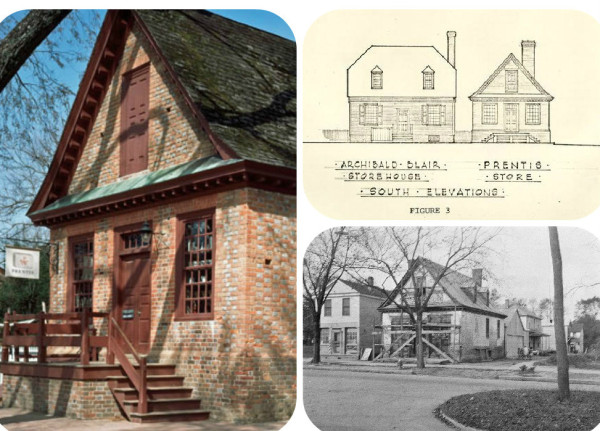 Imagine if these walls could talk; what would they say? In this city, the stories would be particularly interesting. From the centuries of triumphs and trials, to times of war and times of peace, many of our historic buildings have seen it all. Throughout the Revolutionary City, there are 88 original buildings in and around the Historic Area, and each has a story to tell.
Imagine if these walls could talk; what would they say? In this city, the stories would be particularly interesting. From the centuries of triumphs and trials, to times of war and times of peace, many of our historic buildings have seen it all. Throughout the Revolutionary City, there are 88 original buildings in and around the Historic Area, and each has a story to tell.
Over the course of the past 276 years, this building and the businesses housed inside have waned and prospered and one thing is for sure: the building survived and today is one of the oldest structures in Williamsburg. Currently known as the Prentis Store, this building has been standing tall on the corner of Duke of Gloucester Street and Colonial Street since 1739. However, the idea came much earlier.
In 1699, Williamsburg became the Capital of Virginia. Two years later, two merchants, Archibald Blair and Philip Ludwell, saw a need for a retail business. William Prentis, an orphan of a London banker, began his success at only 15 years old when Blair brought him on as their apprentice. When Blair died in 1733, Prentis took over ownership and purchased shares of the business. He also renamed the store William Prentis and Company.
 William Prentis continued to grow the business and six years later, he started construction on the building that is still standing today. The modest brick facade was completed and opened for business in 1740, stocked full of goods such as pottery, textiles, tools, toys, and goods for daily life in the Colonial Capital. The successes of the company showed through not only the bottom line but also the building. The Prentis Store was created with brick and other expensive materials with the intention of becoming an exquisite building that would draw in the wealthiest clients.
William Prentis continued to grow the business and six years later, he started construction on the building that is still standing today. The modest brick facade was completed and opened for business in 1740, stocked full of goods such as pottery, textiles, tools, toys, and goods for daily life in the Colonial Capital. The successes of the company showed through not only the bottom line but also the building. The Prentis Store was created with brick and other expensive materials with the intention of becoming an exquisite building that would draw in the wealthiest clients.
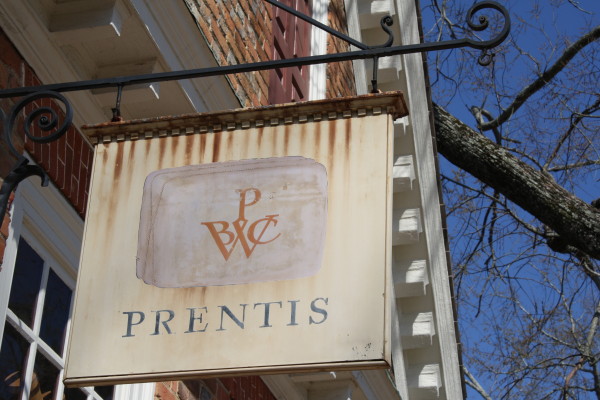
William Prentis and Company continued to prosper for 33 years under the watchful eye of Mr. Prentis. When he died in 1756, he grew the business to such a degree he was the majority shareholder and tripled the shares of his partners as well as his own salary. William prospered in life and died with the legacy of having one of the largest personal fortunes in Williamsburg!
The business remained in the family when it went to John Prentis in 1756 and then to Robert Prentis in 1775. The Revolutionary War created a troubled economy for businesses. In 1779, Robert closed the business. The ownership of the Prentis family came to an end. Robert placed the building up for rent and moved to Trinidad in the West Indies.
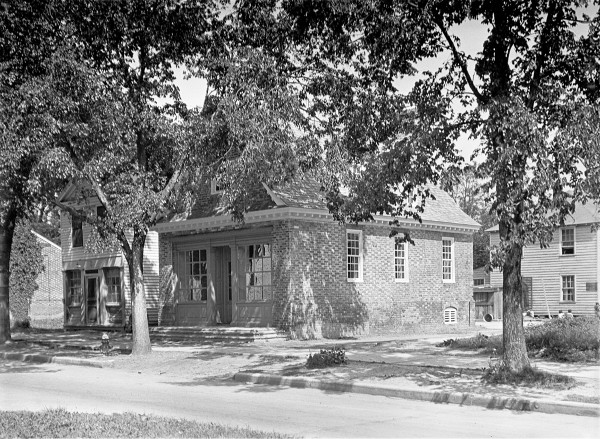 The following year, the capital was moved to Richmond and the once prosperous shop in the colonial capital was now a revolving door of various owners and businesses trying to survive in the now quiet town of little economic importance. A fire at the end of the Civil War destroyed the records of the individual businesses. The only thing that is known with certainty is the building continued to be used for “business purposes.”
The following year, the capital was moved to Richmond and the once prosperous shop in the colonial capital was now a revolving door of various owners and businesses trying to survive in the now quiet town of little economic importance. A fire at the end of the Civil War destroyed the records of the individual businesses. The only thing that is known with certainty is the building continued to be used for “business purposes.”
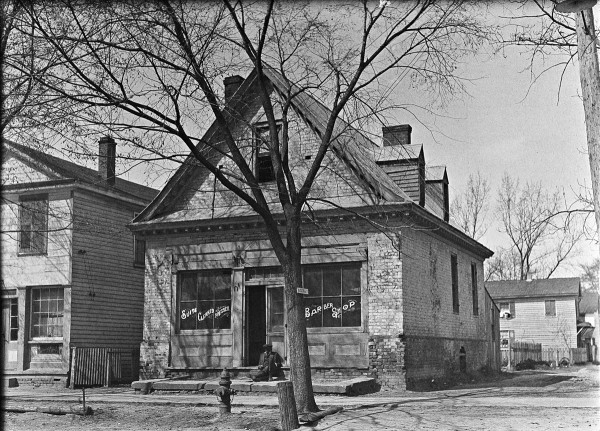 After the war, life began to return to normal. Dr. Edward Camm bought the building and used it as an Apothecary. In 1877, Dr. Camm’s widow Eliza sold the store to William Vest. In 1921, the building was sold to Christine H. Henderson, “a man of foresight who believed in the age of machines.” Henderson converted the building to an automobile service station. In 1926, the building was one of the first purchased by W.A.R Goodwin and John D. Rockefeller, Jr. In 1929, after careful research, the Prentis Store was partially restored. The exterior began to look like the old William Prentis and Company once again. The only exterior change that was not restored was the level of the store’s floor, which remained at ground level. During the initial restoration, the interior was not restored.
After the war, life began to return to normal. Dr. Edward Camm bought the building and used it as an Apothecary. In 1877, Dr. Camm’s widow Eliza sold the store to William Vest. In 1921, the building was sold to Christine H. Henderson, “a man of foresight who believed in the age of machines.” Henderson converted the building to an automobile service station. In 1926, the building was one of the first purchased by W.A.R Goodwin and John D. Rockefeller, Jr. In 1929, after careful research, the Prentis Store was partially restored. The exterior began to look like the old William Prentis and Company once again. The only exterior change that was not restored was the level of the store’s floor, which remained at ground level. During the initial restoration, the interior was not restored.
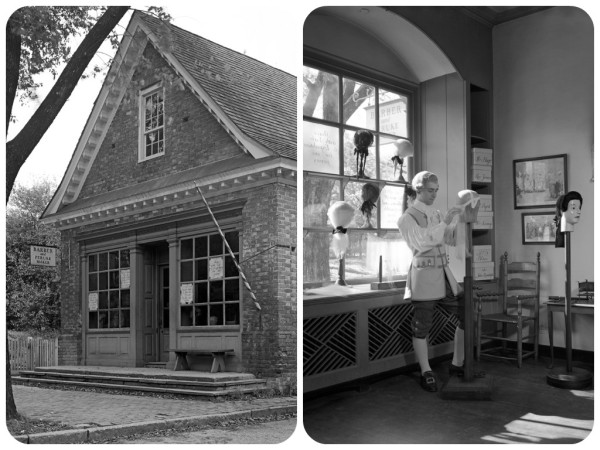 As Colonial Williamsburg grew, the building once again saw many different uses including an antique shop, a printing office, and a wigmaker. With the growth, it was decided that a colonial store was needed to further interpret the story of 18th-century life. It would take 35 years for the Prentis Store to undergo a complete restoration that started in 1959. The floor that was previously left at street level was raised to its former level and shelves and counters were installed, ready to be stocked with reproductions of items sold in the 1700s. In 1973, the Prentis Store was opened and ready to operate as if it were 1740, with a few minor, modern improvements that assisted with the business operations.
As Colonial Williamsburg grew, the building once again saw many different uses including an antique shop, a printing office, and a wigmaker. With the growth, it was decided that a colonial store was needed to further interpret the story of 18th-century life. It would take 35 years for the Prentis Store to undergo a complete restoration that started in 1959. The floor that was previously left at street level was raised to its former level and shelves and counters were installed, ready to be stocked with reproductions of items sold in the 1700s. In 1973, the Prentis Store was opened and ready to operate as if it were 1740, with a few minor, modern improvements that assisted with the business operations.
Did any of you visit this building over the years when it was something other than the Prentis Store?

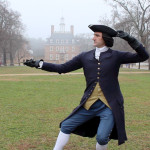
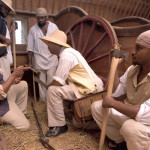
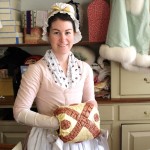
I remember seeing the Prentis store during its transformations when going to Williamsburg during school field trips while in elementary and junior high school. In the sixties the floor was at ground level and then in the early seventies was restored to its correct height. The Prentis store has always been my favorite commercial building in Williamsburg.
Was Christine Henderson (“a man of foresight who believed in the age of machines.”) a male or female? Might be an interesting story there…
Christine,
Christine Henderson was a man, but it is interesting that he had that foresight.
Looking forward to more reports on the original 88 buildings.
Fred,
I am looking forward to researching more buildings and continuing the series.